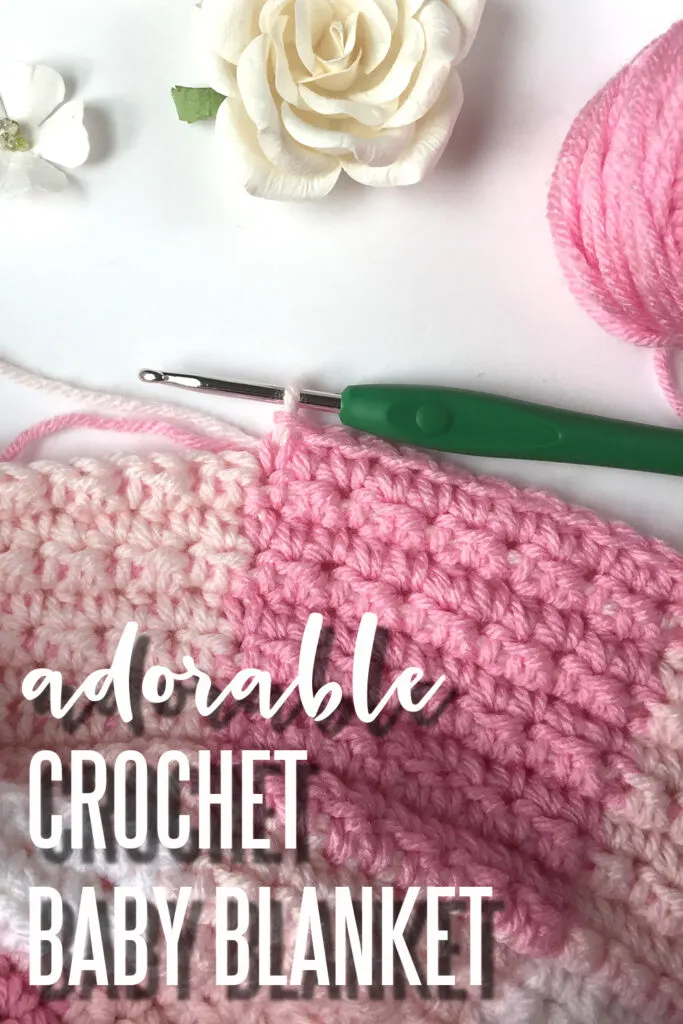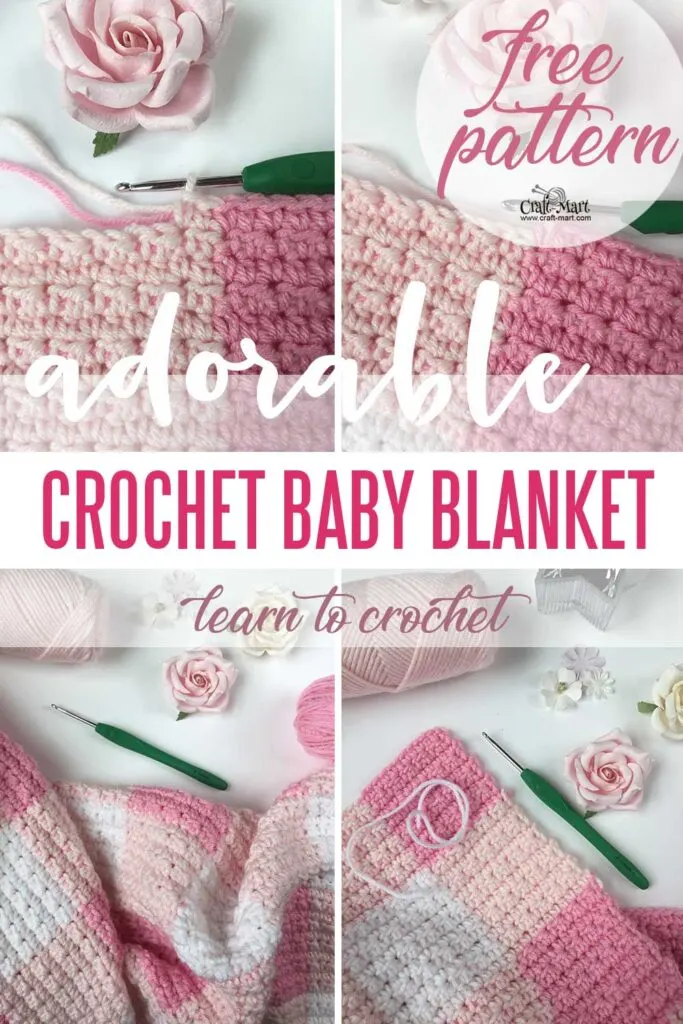Today we’d like to share a crochet baby blanket pattern that looks more complicated than it really is. Most importantly, this pink gingham crochet pattern is free (and easy).
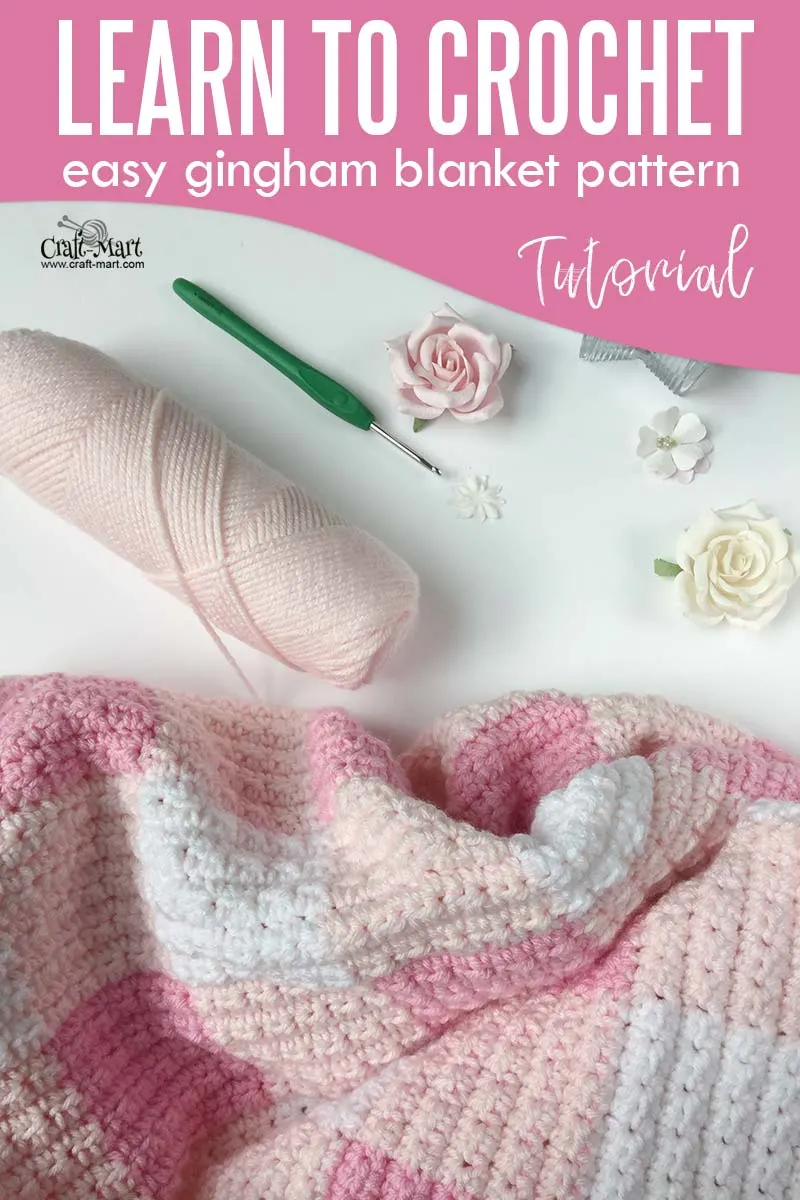
What is Gingham Crochet Pattern?
In fact, gingham is the name of the fabric that was originally made from a cotton-blend yarn. Because of the weaving process, the single-colored yarn creates a striped or checkered pattern against the white yarn. There can also be different levels of transparency in the color tones. Historically, it is speculated that the fabric now known as gingham may have been made at Guingamp, a town in Brittany, France and that the fabric may be named after the town.
How to Crochet Baby Blanket Pattern in Pink Gingham
First, we should mention a few characteristics of this crochet baby blanket pattern. To create a distinctive gingham pattern, you would change the color of the yarn from one square to the other.
In the meantime, one color yarn is always carried through the whole project. For this crochet baby blanket pattern, it is a medium color (soft pink) that we carry through the whole pattern.
More easy crochet baby blanket patterns
If you are just beginning to try different crochet baby blanket patterns, you may be interested in some easier alternatives:
- One of the Prettiest Crochet Baby Blanket Patterns
- Half Double Crochet Blanket Tutorial
- Caroline Crochet Baby Blanket (easy crochet blanket tutorial)
- Easy-to-Crochet Baby Blanket Pattern (How to Crochet a Blanket Using Moss Stitch)
- Easy DIY crochet baby blanket patterns you can finish in a weekend
Tips for beginners to create a perfect crochet baby blanket
If you are a beginner and haven’t tried one of the gingham crochet baby blanket patterns yet, you may wonder how you do that. It is amazingly easy but takes a little practice. You would place a strand of yarn that is not in use on top of your work and just crochet over it.
Consequently, you’ll create color squares without the need to cut yarn every time you finish a square. Most importantly, you will not have a lot of weaving in the tail ends to deal with.
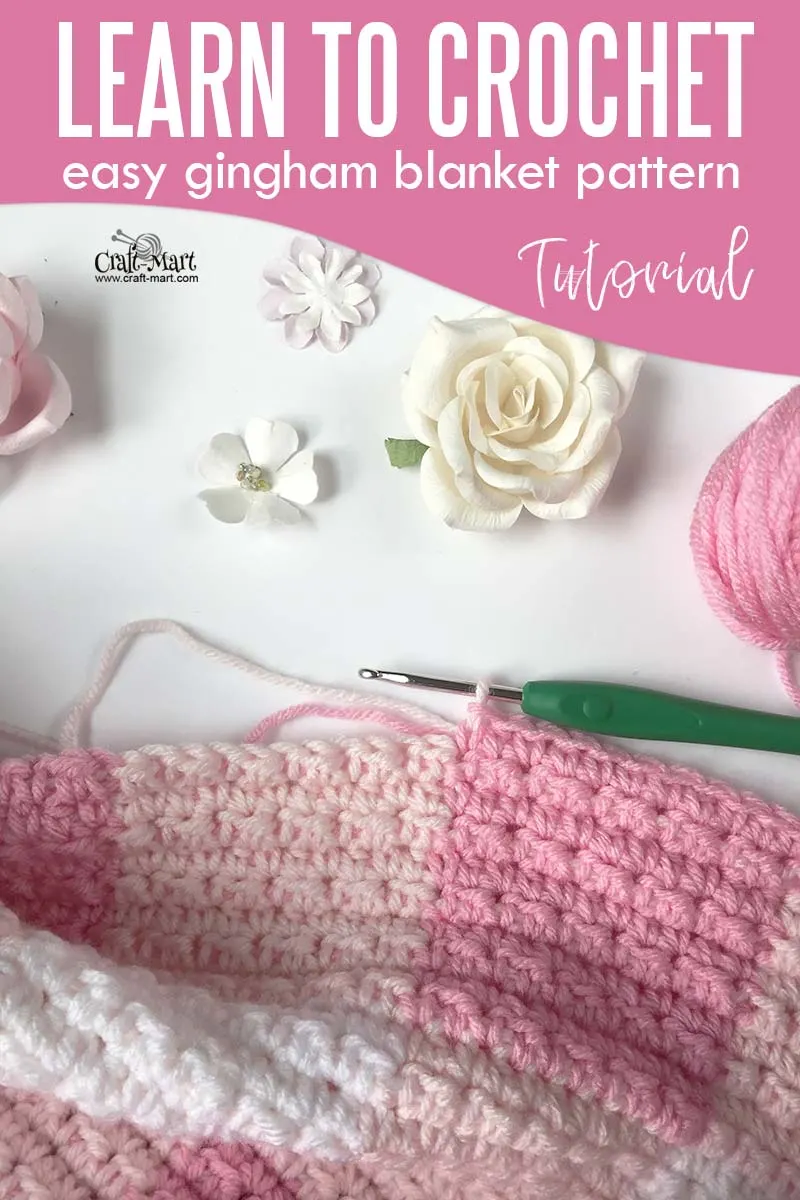
For this crochet baby blanket pattern, we are using one of the softest yarns around: I Love This Yarn by Hobby Lobby. Not only this yarn is soft and durable but it also comes in 64 different colors.
With this in mind, you can pick the colors that best fit your needs. Whether you are looking for yarn to crochet a baby blanket pattern for a girl or boy or want a gender-neutral blanket to fit with nursery colors, you can pick a perfect color scheme at Hobby Lobby.
In order to create an eye-pleasing gingham crochet blanket, you would need three colors. The first thing to remember is that the two colors have to be contrasting. We used white and pink in this crochet baby blanket pattern.

Consequently, the middle color (visually) has to be the result of adding white to the darkest color. Indeed, soft pink yarn works great for this purpose.
As a result, you would need twice as much of the middle color yarn as the two other yarns in this project. In fact, it is the only yarn that is used in every row of this crochet baby blanket pattern.
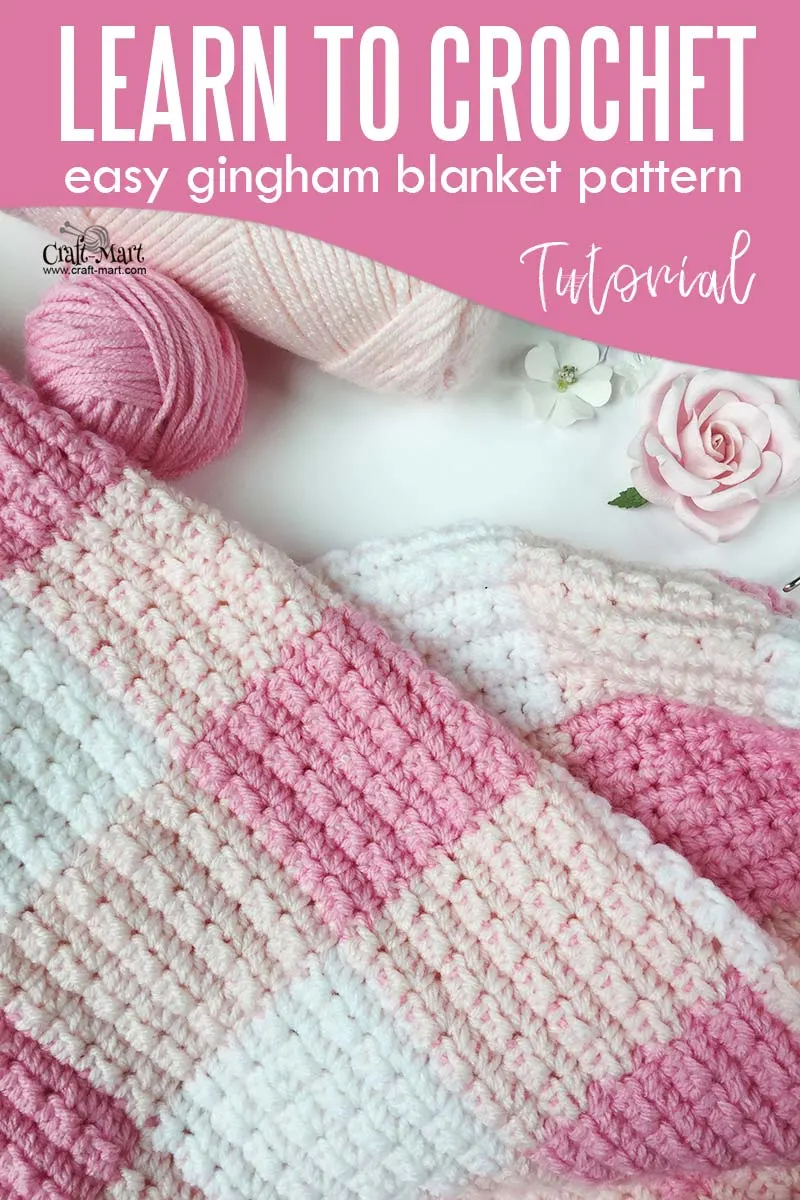
Crochet abbreviations
ch – chain
SC – single crochet
HDC – half double crochet
Crochet a practice swatch to check your gauge.
First of all, you’d need to practice carrying on the yarn when you are changing colors from one square to the other. Not only it may be tricky to adjust your tension at the end of each square but it is also important to make sure that your carried yarn is well hidden inside your crochet stitch.
Second, it is important to check that your crocheted square is as close to a square in measurements as possible. In other words, the horizontal and vertical measurements should be the same.
To start a practice swatch, chain 33 (3 x 11) plus 1 in pink. This pattern requires odd multiples of 11 stitches plus 1 ch to turn.
Row 1
SC into the 2nd ch from the hook. HDC into next ch. Continue alternating SC and HDC until you make 10 stitches. 11th stitch will be SC: start it as regular SC but pull through the three loops on the hook with a new color (soft pink).
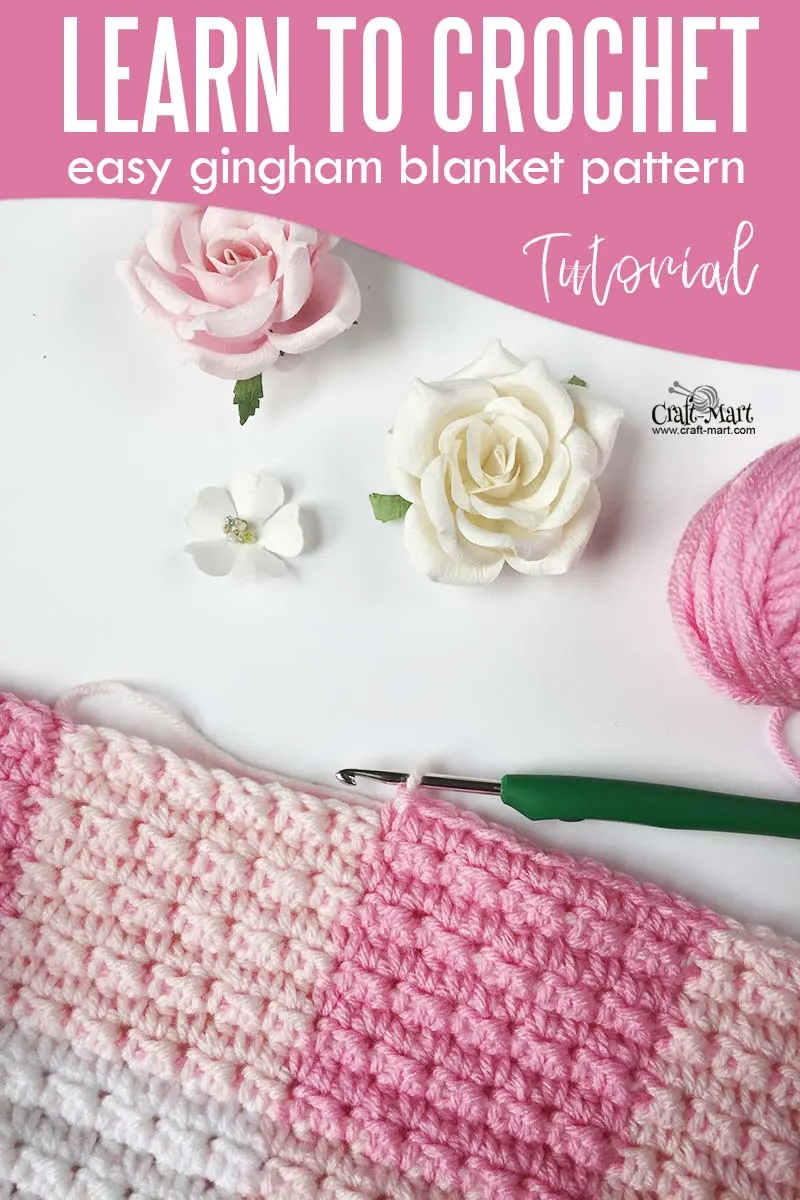
Place a strand of pink yarn over your chain – you’ll crochet over it to cover the strand with your stitch. HDC (with soft pink) into the next ch. SC into next ch. Continue to alternate SC and HDC until you have 10 stitches in soft pink.
Pull gently on a hidden darker pink strand to make sure it is well-hidden and is not showing through your work. Don’t pull too hard as it will mess up your work. HDC into the next chain but pull through three loops on the hook with the pink strand (changing colors).
Continue to crochet with the pink strand alternating SC and HDC while the soft pink yarn is placed over the chain. The last stitch is SC in the last ch. At the end ch1, turn.
Row 2 (with pink)
SC into the first SC from the previous row. HDC into the next stitch. SC into the last 11th stitch of the forming square and pull through with soft pink.
Continue to the end of the row alternating SC and HDC and changing colors. After the 1st row, it becomes pretty easy as you can see where to start with a new color. The 1st row is the only one where you have to count stitches.
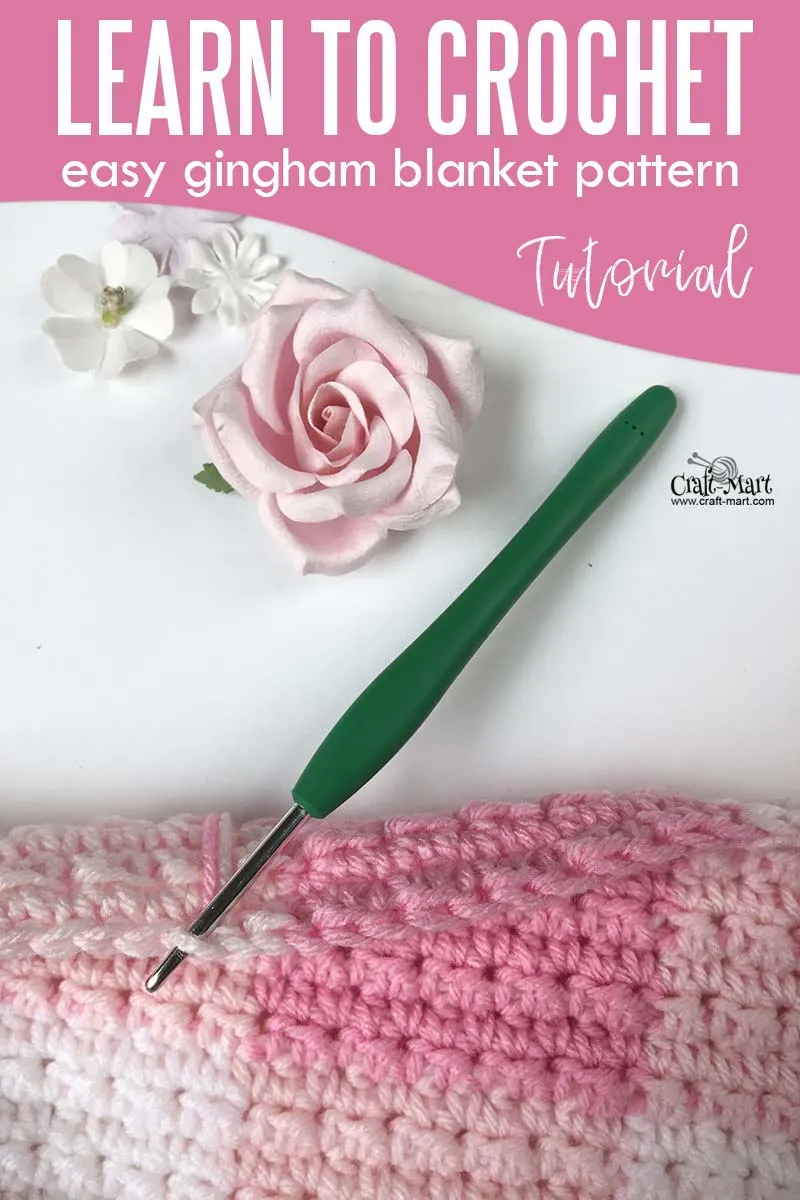
Rows 3-10
Crochet 10 rows and make sure your squares are as close to perfect as possible. If not, you may adjust the number of rows before you switch to a new color combination. For my crochet baby blanket pattern, 10 rows were perfect.
As you can see, it is a very easy crochet blanket stitch: you are alternating two basic crochet stitches – SC and HDC. But as a result, you have an interesting textured blanket that has a warm and dense fabric structure.
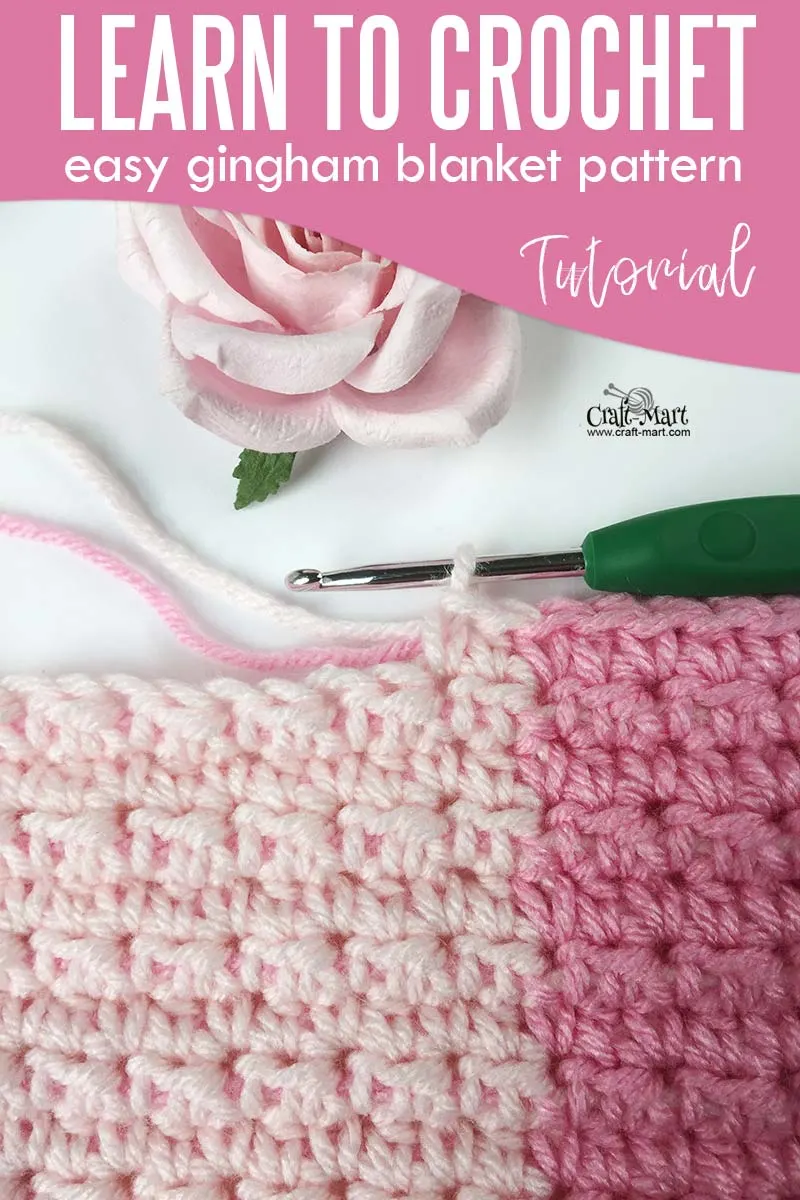
As long as you follow these steps, you will have a perfect gingham effect in this unique crochet baby blanket pattern. As an illustration, that’s how your crochet work will look on the front and back when you are working with two strands.
To point out, with the correct tension you can’t see the hidden strand and your work looks perfect. It should be not too loose, not too tight. Important to realize, that you would be able to see a hidden strand of yarn if you look closely – but barely.
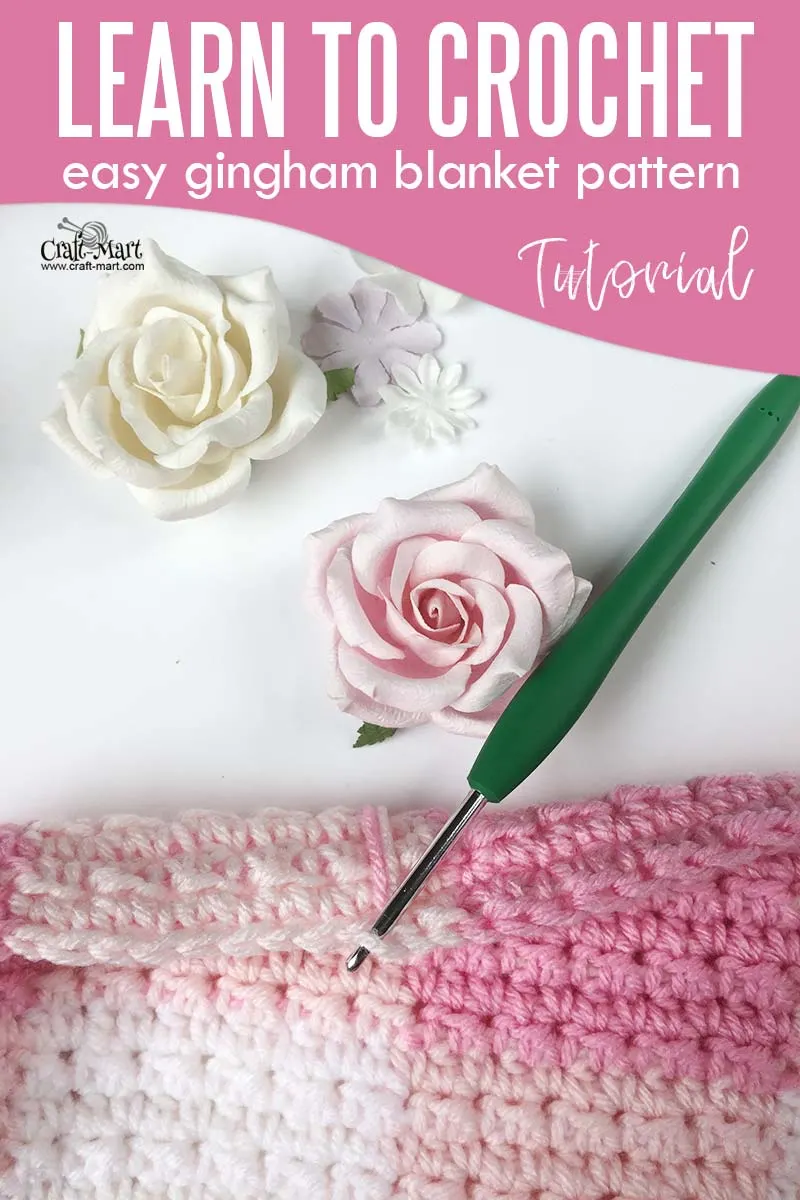
As a result, this crochet baby blanket is truly reversible. For this reason, it makes this pattern perfectly suitable for crocheting baby blankets.
Materials
- 2 skeins of I Love This Yarn (Hobby Lobby) in Soft Pink (#102)
- 1 skein of I Love This Yarn (Hobby Lobby) in White (#10)
- 1 skein of I Love This Yarn (Hobby Lobby) in Pink (#100)
- Crochet hook G-6 / 4mm
Notes
To change color in the same row from one square to another, start the stitch as you would normally do, but pull through the last loops with a new color. Place the yarn not currently in use on the top of your work and crochet over it, hiding it with your stitch. Make sure you don’t accidentally pull your hook through the yarn that is not in use.
At the end of each color square, before proceeding with a new color, gently pull on the hidden strand to align it and ensure the tension is not too tight or too loose.
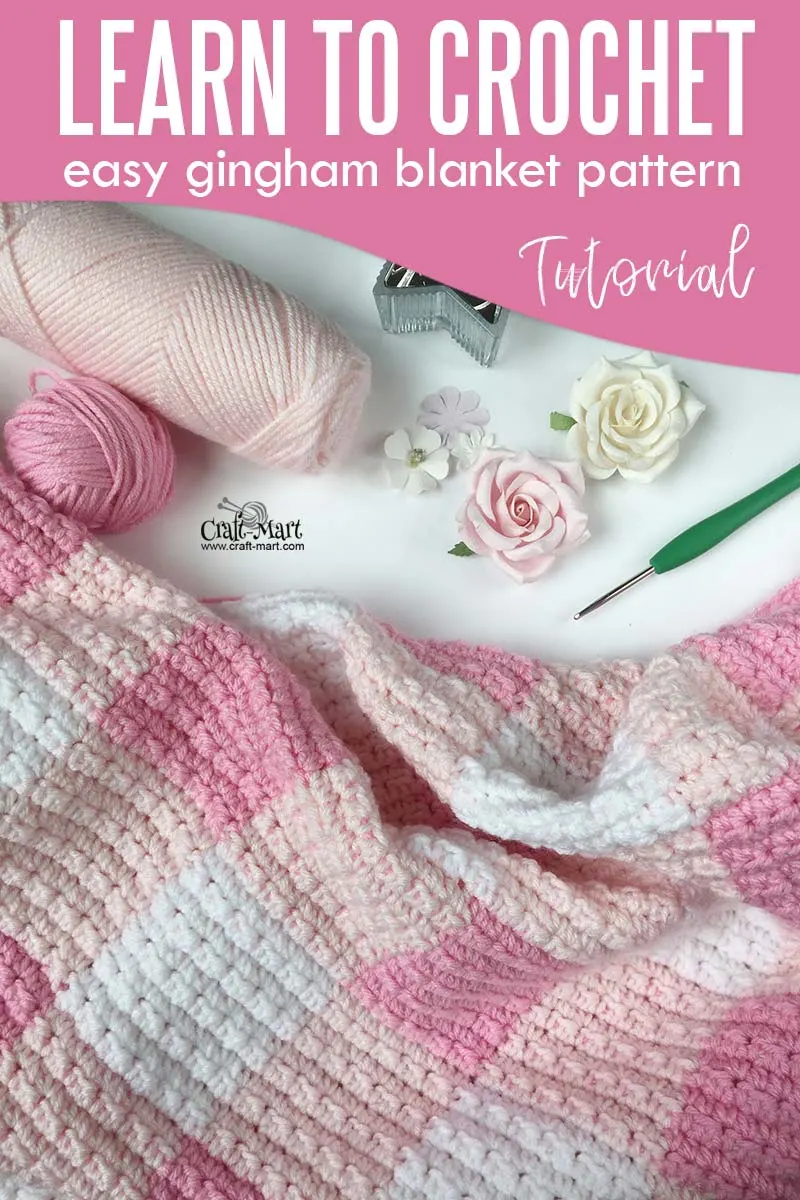
At the end of each row, continue placing the hidden yarn (not in use) on top of your work, except for the last stitch. Simply lift the strand up and finish the row. After turning, continue as before, placing the yarn on top of your work. Give the hidden strand a slightly tighter pull to hide it.
In fact, I’ve realized that it is much easier (psychologically) to weave the ends as you go and not to wait until the end. With this in mind, take a tapestry needle and weave in the loose yarn tails after you finish 10 rows.
Most importantly, your work will look and feel much neater and you won’t have 24 tail ends to deal with when your blanket is almost done.

Directions
Ch 121+1 with Pink. It will create an odd number of squares (11) x 11 stitches in each plus 1 (turning ch).
1st Row
Sc into the 2nd ch from the hook. *HDC into next ch. SC into the next ch.* Repeat for the next 8 ch. (you have created a foundation for the first pink square – 11 stitches). Pull through the last stitch with a Soft Pink color.
HDC with soft pink into the next ch. *SC into the next ch. HDC into the next ch.* Repeat until you have 11 stitches in Soft Pink.
Keep alternating SC & HDC and changing color every 11 stitches to the end of the ch. Overall, you will have a foundation for 11 squares with 11 stitches in each – 121 stitches. The last stitch SC.
Ch 1 to turn.
2nd Row
With the same color as the underlying row (pink), SC into the first stitch, *HDC into the 2nd stitch, SC into the 3rd stitch.*
Repeat between * * to the end of the row changing color every 11 stitches. It gets straightforward with the second row as you can clearly see where to start a new color. 121 stitches.
Row 3-10
Repeat the second row. At the end of the 10th row, pull through with soft pink. Leave a tail end ~17-20 inches long and cut off pink yarn.
Row 11.
SC with soft pink. Make the first 11 stitches with soft pink yarn and pull through the 11th stitch with the white color. Pull slightly on all strands to achieve perfect tension.
Crochet the next 11 stitches with white. Continue alternating soft pink and white (white will be on top of soft pink squares; soft pink will be on top of pink squares).
Your gingham pattern is starting to take shape.
Rows 12-20 (Soft Pink and White).
Keep alternating SC & HDC and changing color between soft pink and white every 11 stitches to the end of the row. Overall, you will have 11 squares with 11 stitches and 10 rows in each – 121 stitches.
Rows 21-30 (Pink and Soft Pink).
Keep alternating SC & HDC and changing color between pink and soft pink every 11 stitches to the end of the row. Overall, you will have 11 squares with 11 stitches and 10 rows in each – 121 stitches.
Continue until you have a blanket that is 11 squares by 11 squares.

The finished blanket is 36″ by 36″ without a border. Naturally, you may want to add a border in soft pink all around the blanket in HDC placing 5 HDC in the corners. In this case, you should have any leftover yarn.

